Bogota Colombia. – Thirteen years after the creation of the District Institute of the Arts (Idartes), an entity attached to the Ministry of Culture, Recreation and Sports, its general director, Mauricio Galeano, explained in an interview with Peninsula 360 Press, how through graffiti programs, work with early childhood, attention to migrants, and The holding of hip-hop and rock festivals has managed to recover public spaces, allowing people to take ownership of the city through art.
During our talk, we delved into the fundamental bases that led the Mexican politician Clara Brugada to seek advice on art and pacification in Bogotá, with the purpose of implementing the recognized “Utopias” in Mexico.
These initiatives have had a significant impact on the social and cultural life of Iztapalapa, marking an important shift in the way the community perceives and participates in its environment in Mexico.
Likewise, we explore how President Gustavo Petro promoted work with early childhood to initiate a change in the vision of art from childhood, as well as the recovery of spaces previously affected by crime for the creation of cultural centers.
In this interview, we review some of the most important programs of this institute.
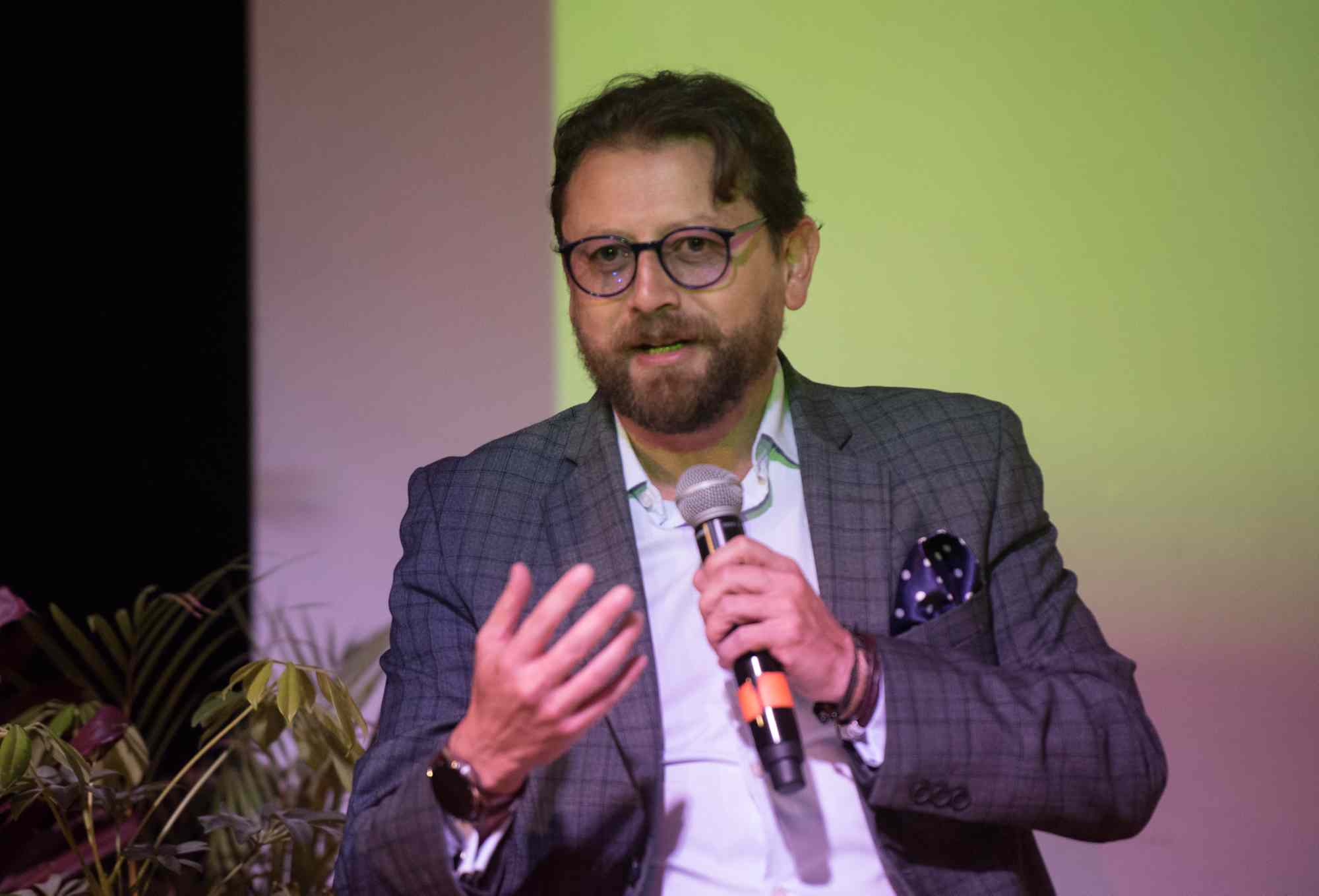
Alejandro Melendez: First, I would like to ask you, especially for people here in Mexico, if you can explain to us how Idartes (District Institute of the Arts) works.
Mauricio Galeano: Basically, we are dedicated to the management, promotion and dissemination of the arts in the city of Bogotá. We have four subdirectorates. The first is an administrative-financial direction. The second subdirectorate focuses on artistic training, with three projects: one of them works on the promotion of the arts in the community and neighborhoods. Another project is ?Crea?, which offers artistic training for children, young people and adults in seven disciplinary areas, such as music, theater, literature, plastic and visual arts, electronic arts and music. I think I had already mentioned it among the six canonical areas, plus electronic arts. In addition, we have a project called "Nidos: Early Childhood Art," which generates artistic experiences for boys and girls under five years old, along with their families and caregivers. Our goal is to provide experiences that allow children to have an approach to the arts and aesthetics.
The third subdirectorate is Cultural Equipment, in charge of managing, operating and programming various cultural venues in the city. In that subdirectorate, we manage two mobile stages: that of María Mercedes Carranza and that of Armando de la Torre, which travel throughout the city. They are trucks that carry a trailer, and in that trailer we have a stage that unfolds, allowing us to perform music, dance, theater and any artistic manifestation. In addition, we have the Jorge Eliécer Theater Gaitan? and its alternate room, the "Gaitán Room." We have the "El Parque Theater", which we put into operation after a restoration process. Another of our spaces is "La Media Torta", an open-air theater with 86 years of history. We are also part of the "Bogotá Planetarium", one of the most interesting multipurpose and multifaceted settings in the city. It has a dome for film projection, possibly one of the largest in Latin America. Recently, we renewed its technology to 4K and improved the image processing system, allowing us to be connected with planetariums around the world.
The ?Share Cultural Center? It is a small and new stage for the community of Ciudad Bolívar. On the other hand, the ?Teatro El Ensueño? It is a theater located in the south of the city, in an area where there were no theater infrastructures before, whether public or private. We put it into operation at the beginning of 2021 and it has a capacity for 900 people, making it a very beautiful forum.
Finally, there is the Arts Subdirectorate, which has six departments that work directly with the city's artists. These managements cover music, dance, audiovisual arts, plastic and visual arts, literature and dramatic art. In addition, the subdirectorate has two strategic lines. One of them is "Art without Borders", which focuses mainly on the aesthetic and artistic expressions of border communities and vulnerable communities that have been victims of multiple violence throughout history in the territory of Colombia.
In the Subdirectorate of Labor, Migrant Population and Sustainability, action focuses on providing alternatives for the creation of companies associated with the economies of creativity, especially in the field of economies related to art. In addition, this subdirectorate manages two transversal areas that cover the entire entity. The first is the calls area, through which we deliver incentives, which basically consist of awards, scholarships and public calls for artists in the city. The second is the production area, which covers all production, technical and logistical processes, both for smaller events and for large Park Festivals.
Within this subdirectorate, there is a support line dedicated to internationalization. We also have a communications office, a legal office, internal control and interdisciplinary control. In total, about 2,500 people are part of the work team at Idartes. This is the operating model that we have implemented.

A.M: In other countries, such as Mexico, more support is provided for social assistance and security. I observe that you strongly promote the reconstruction of the social fabric through art. What has that path been like? I see that they promote the public policy of fewer police and more art.
MG: What we have done in the city, fundamentally for several years, is to propose that arts and culture are key elements that are intertwined with other agendas to improve the living conditions of the city's inhabitants. Although we have a relevant agenda in areas such as the environment, security and mobility, which are common concerns for city leaders around the world, culture has been recognized as a fundamental piece for the comprehensive development of Bogotá society.
Within this established structure, the Institute of Arts acquires a preponderant value, becoming an institution that allows artists to have an impact not only on the art agendas, but also on other crucial agendas for the city.
So, for example, the "Open Museum of Bogotá", an initiative that allowed us to intervene nearly 60,000 square meters with muralism, has evolved this year by recognizing that this muralism cannot be isolated from community processes and life in the neighborhoods. What we have done is facilitate the artists to sit down with the communities to define the themes that will be reflected in the murals. This has managed to generate an emotional connection with the work of art, leading the community to actively care for it. In addition, it has had another important impact; For example, on 26th Street, one of the main access roads to Bogotá from the airport, we carried out a large-scale intervention in muralism. The city's public services company improved the lighting conditions of the bridges in the areas under them to highlight these pieces of muralism.
That may seem insignificant, but it actually has a significant positive impact on the perception of safety and, beyond perception, improves the safety qualities of spaces. In studies carried out with the Ministry of Security, we observed that in the areas under the bridges that have been intervened and have experienced a process of appropriation, crimes associated with theft, robbery and sexual violence have effectively decreased in significant proportions, exceeding the 50% and, in some cases, reaching 60%, compared to measurements prior to the artists' interventions.
This is what we have been doing. We have managed to incorporate the arts into the agenda of other entities, which has allowed us to enhance development and improve indicators in various areas. For example, in mental health, we have made measurements that indicate that people who were in contact with us and the arts during the pandemic show better mental health indicators, with lower rates of anxiety and suicidal actions. In the case of early childhood, we can affirm that boys and girls who have early contact with the arts improve their indicators of early childhood development, especially in relation to positive attachment. In addition, they are associated with a very valuable mission: the number of words they can say and learn more quickly, which enhances their development.
In short, rather than opposing other agendas or downplaying their importance, our approach is to integrate the arts into everyday life. By placing them in everyday life, we begin a dialogue with the agendas of other entities and sectors of society, improving their indicators and promoting development.

A.M: I was just going to ask you about the "Open Museum." You already mentioned it, but how have the other programs been, such as ?The Book of the Wind?, the ?Line of Arts and Memory Without Borders?? Especially in terms of the impact on citizen participation. There is often a misperception of culture in closed spaces. Culture in open spaces makes it easier for people to approach and lose their fear of participating in artistic activities. What has it been like to work on these projects?
MG: For several years now, we have started from a fundamental premise: we work from the creative powers of the community, not from the shortcomings of a specific sector. By recognizing these creative powers, we can establish that all people, all human beings, have some creative capacity. What we do at the Institute is to promote this in various ways. Of course, not everyone who does or creates something at some point is necessarily an artist. We have specific lines of work with professional artists, who are also an integral part of our work and what you mention.
Bogotá Open Museum It has allowed us to collaborate with muralists and graffiti artists, working hand in hand with communities to create precisely those murals, providing a meaningful vision to the communities. On the other hand, ?Art and Memory without Borders? It has become a liberating space where people who have historically had their most important rights violated, such as the right to free expression, find a safe place. When you are displaced from your home, you are a victim, your family suffers a massacre, and you see all the adversities that we experience in Bogotá and Colombia, situations that are also experienced in Mexico, the first thing that is lost is the ability to express it. Art becomes indispensable so that these communities can reconnect with their voice and express themselves again, providing liberation from various aspects.
Not all participants in ?Art Without Borders? They are not necessarily accomplished artists nor do they intend to pursue art as a profession. However, they seek in art, or find in artistic expressions, a path to liberation and recovery of their voices and forms of expression. This is essential for us. ?Art Without Borders? has provided hundreds of people and artistic and community groups with spaces to share their experiences, enhance resilience and explore paths of healing and symbolic reparation.
Within them, we have a very beautiful project called the "Castle of the Arts." You may have seen it, the "Castle of the Arts", which was previously a nightclub with multiple problems, where various crimes were committed. It was expropriated through the figure of domain extinction due to the criminal ties of its owners. They gave it to us, and we transformed it into an artistic center in the middle of a tolerance zone, which is a regulated area for the exercise of paid sexual activities in the city.
In this space, we serve children, women, the trans community and multiple victims of violence, as well as those who want to know what happens in El Castillo. We offer dance, music, theater workshops, ?Crea?, the ?Nest of Dreams? and a small library. Furthermore, it is part of the care system, giving voice back to those who had been silenced for some reason.
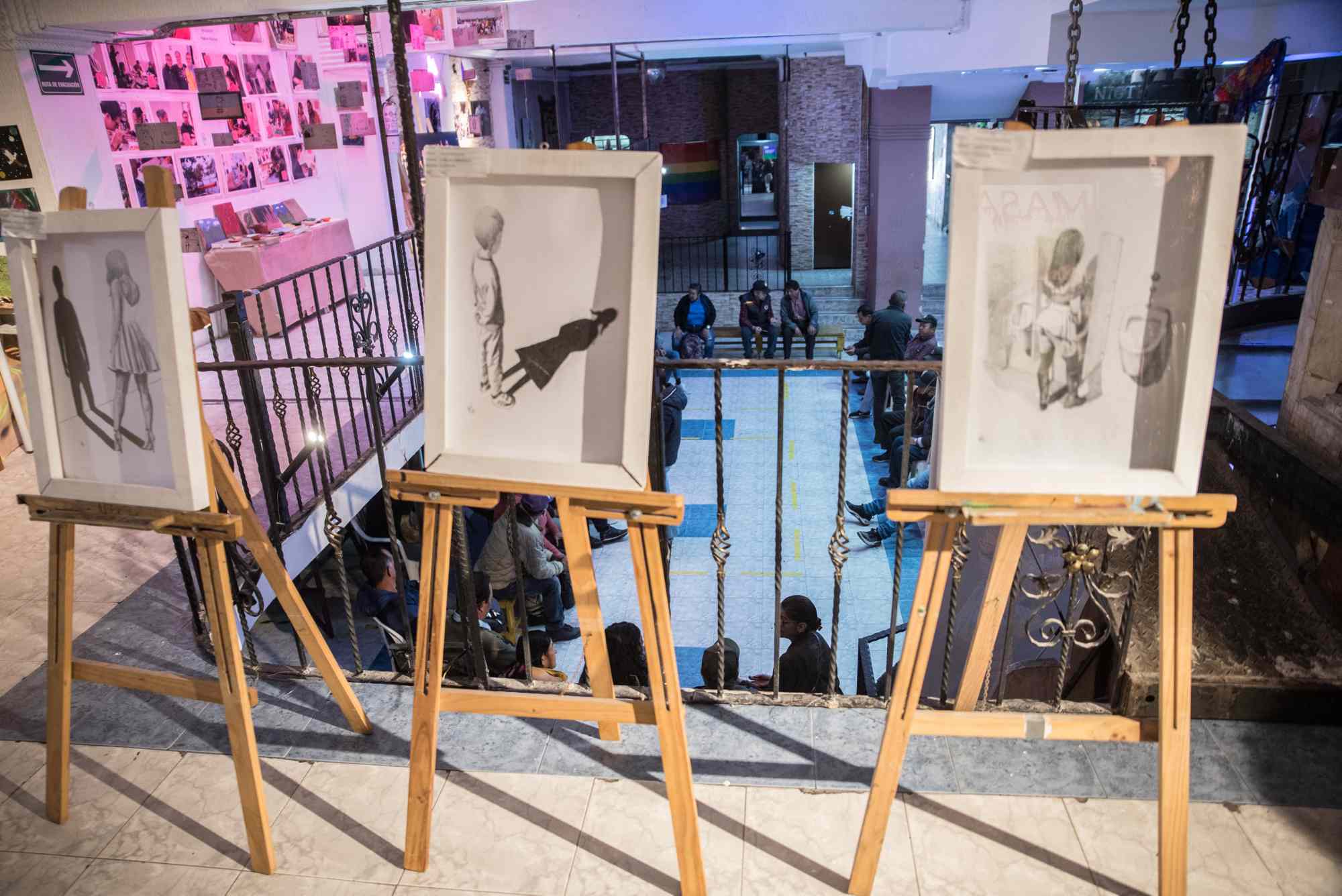
A.M: Precisely in relation to what you mentioned about "The Castle", I wanted to ask you something. I had the opportunity to visit it and especially observed the work project with Venezuelan migrants. How is this work being carried out? In Mexico, we also face constant migration and migrants are often stigmatized. Here, we see that a significant effort is being made to raise awareness about the importance of not stigmatizing these migrants. Could you share more details about the work you are carrying out in this regard?”
MG: Of course, in El Castillo, we have identified a considerable Venezuelan migrant population, especially boys and girls. This is part of a broader policy of the mayor's office, which recognizes that these people, especially the Venezuelans who migrate in this third wave, do not do so by choice, but for various reasons. In Bogotá, we have implemented an open arms policy, where we quickly involve people, especially boys and girls, in educational and health services.
For those who wish to follow their path, we provide different types of protection, and for those who wish to stay, we adopt them as new Bogota residents, thus following the city's policy. From the artistic field, we have generated several alternatives. The attention in ?El Castillo?, and specifically in ?El Nido?, has allowed us to carry out actions to recognize and map the migratory transit of boys and girls. We have also explored how they leave part of their culture and how we can recover it to foster intercultural dialogues, thus facilitating their integral development without losing sight of their roots. We consider that migrations, for the most part, bring with them development opportunities by introducing new perspectives and visions of the world to our city.
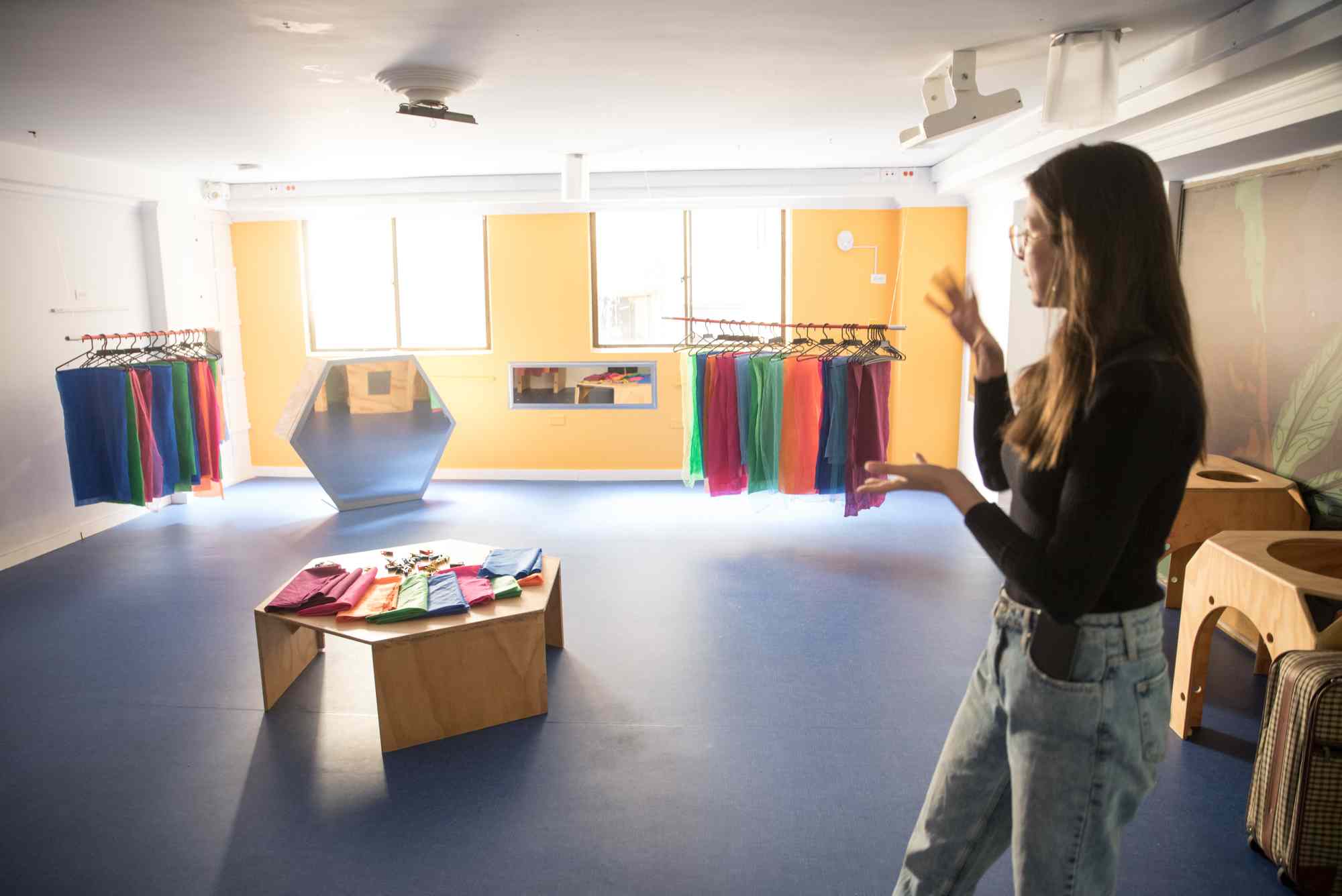
A.M: In Mexico, the reality is that we are quite behind in working with early childhood. We are just recognizing this aspect, while you already have quite extensive work. Could you tell us how this work with the Nidos program began and approximately how long have you been doing it?
MG: The program is now ten years old. We began with the creation of a public policy, the Zero Policy. At that time, the mayor, who is currently President Gustavo Petro, proposed that all public entities should include children under five years of age in the comprehensive care route, although it was not very clear what that route would be like or how far it would go. Regarding aesthetic aspects, the Institute of Arts showed interest. We decided to design something and we started in 2013 with the incorporation of elements related to artistic experiences.
We began to consider what it would be like to have artistic experiences with babies, since the mayor's initial challenge was to work with children under three years old, which made it even more complex. We began the documentation work, looking for alternatives that would allow us to respond to the needs of the city. We discovered that many children under three years old were not institutionalized, that is, they did not attend kindergartens; most were still with their mothers, grandmothers and caregivers. Any approach to care had to take this care into account.
We developed a model we call “artistic experience,” which combines elements of a completed work, such as a concert or play, with those of a workshop. This artistic experience becomes an intermediate point where boys and girls can interact with the place and the artists, beginning to incorporate knowledge naturally, without a specific learning objective, but to aesthetically understand the world around them. In addition, it gives them the opportunity to interpret, recreate, rethink and play, especially with the objects and elements arranged in the environment.
This ten-year journey has allowed us to better understand devices designed for early childhood and how children go through them and modify them with their experiences. We have learned and played a lot in this process. If you would like more information, we have a 2.0 page where we share documentation and research that offer a more detailed view of our work.
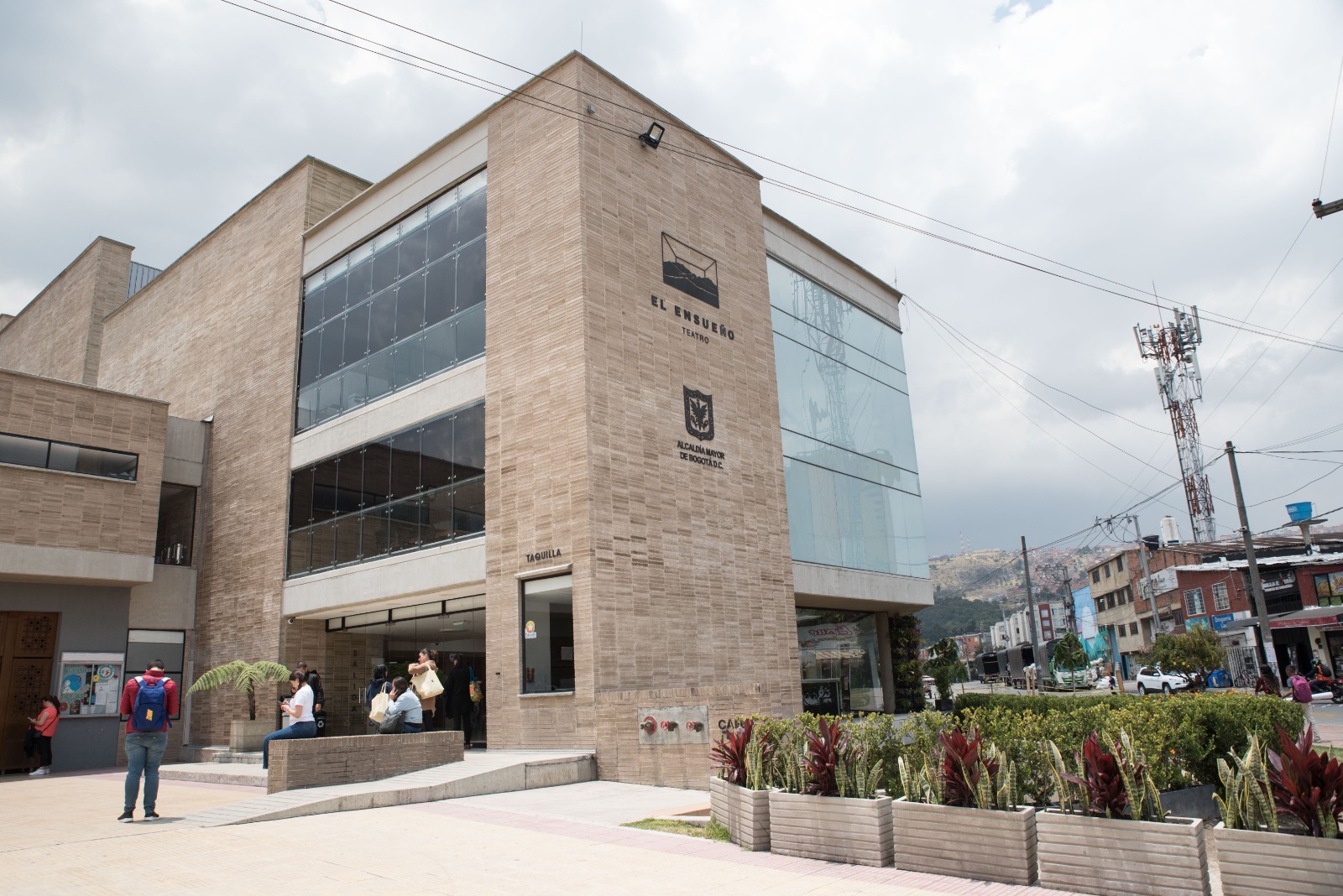
A.M: Here in Mexico, Claudia Brugada, who comes from Iztapalapa, recently ran for mayor of Mexico City. She was advised by Jorge Melguizo from Medellín with the aim of creating the ?Utopias? to combat the marked social inequality and the predominant violence in Iztapalapa, one of the most impoverished neighborhoods in Mexico City.
I would like to know your opinion on this situation. It reminded me of your comments about “Teatro El Ensueño” and the importance of bringing cultural experiences to places that lack them. In the case of Iztapalapa, the lack of spaces for cultural recreation was evident. What has it been like for you to create places like “Teatro El Ensueño”, “El Crea”, “Centro Cultural Manitas”, among others, in environments marked by marginality and violence? Personally, I had the opportunity to witness these spaces in Ciudad Bolívar and it was a very rewarding experience.
MG: Well, this type of infrastructure allows, above all, the community itself to get involved. With this type of large and important infrastructure, the community feels increasingly represented and actively participates in the cultural and artistic life of its neighborhood.
Indeed, the dream has allowed us to greatly energize what happens in that area of Ciudad Bolívar, especially with circus artists and those who were already there. Because anywhere you go, you will find some type of artistic manifestation.
Many times, what we must do is create spaces for artists to work, thus generating community in the same process. So, this type of infrastructure allows everyone's work to be dignified and makes communities feel more included in the city's public policy. They feel loved and appreciated, generating affection for the city, even in those communities that have been totally abandoned.
In any case, there are places in Bogotá that still do not have these infrastructures. What we do is use mobile infrastructures that allow us to take the scenarios to any place in the city. These infrastructures generate a break in daily life, and in some cases, like the Crea, we have 20 in a city of 8 million inhabitants. There is no small amount of what we have been doing with the creators.
In addition to having anchor centers for each Crea, we have extension points where artists go and modify the everyday space a little. At school, they reconfigure the community a little, the community room or meeting places, allowing, above all, the resignification of those places that, otherwise, could be stigmatized by the community itself.
I believe that we have to make some combinations between hard infrastructure, which is fundamental. We need theaters, centers, libraries; we need spaces for meeting and for creation. However, there are places in our communities where either there is not enough space, there is no available land, or while the infrastructure arrives, life goes on.
That was a policy we had with children. While I wait to have the Nest built, let's say, the adequate space built, since a generation passed me and I lost an opportunity. I had 10,000 or 15,000 children from that neighborhood who had no chance of having contact with art.
So, in the meantime, we have to do and modify what we have, giving new meaning and also giving it value. Sometimes, there are places in communities that we are losing; Neighborhood life is being lost to give way to other activities. And what we cannot allow is that. We need more children playing in the street, more families talking in the street. We cannot lose what makes us Latino and what makes us so passionate about life.
On the one hand, infrastructure is very important and we must build more, but while they arrive, we must take over the streets, the squares, the community spaces to share with the family and so that artists have places to perform and live in the community and in the communities we have.
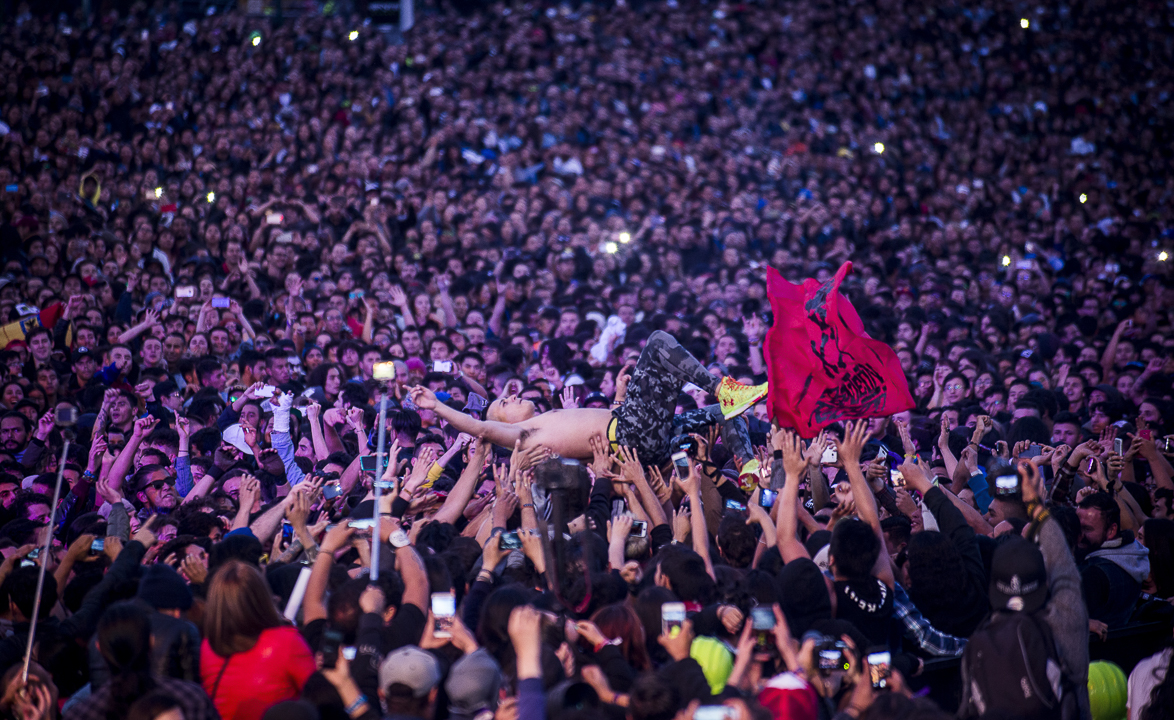
A.M: Now, tell us about the more established programs, such as the Rock al Parque Festival, which has been going on for a long time, as well as Salsa al Parque or HipHop al Parque. What is the direction these festivals are taking? What are the future plans for these concerts?
MG: We are known for the big music festivals, like the Rock al Parque festival, Jazz, Hip Hop, Salsa, and we have a new one which is Joropo. In total, there are 22 festivals of the Institute of Arts. This is a very interesting conversation, because the festivals we organize were born with the idea of democratizing access to artistic expressions, both in music, dance and theater. In a country with a low basic income per capita, income per capita is low, even compared to Mexico, and part of the democratization process means that we have to organize free access events and festivals so that people fall in love with music and can enjoy moments of social relief.
Festivals seek a double purpose. On the one hand, they are showcase and training spaces for artists, an incredible launch pad where new proposals become very important in Latin America. Many people come to see them and support their district artists. For us, they are a tremendous platform for both the artists and the public who come to see them. It is a place where they feel proud of the city and can enjoy artistic expressions in very well-organized events. That they are public does not mean that they are disorganized; On the contrary, we seek to have the best possible quality in free access events that allow citizens to meet in democracy in the parks, squares and streets where we hold these festivals. We also give greater value to public space and the city.
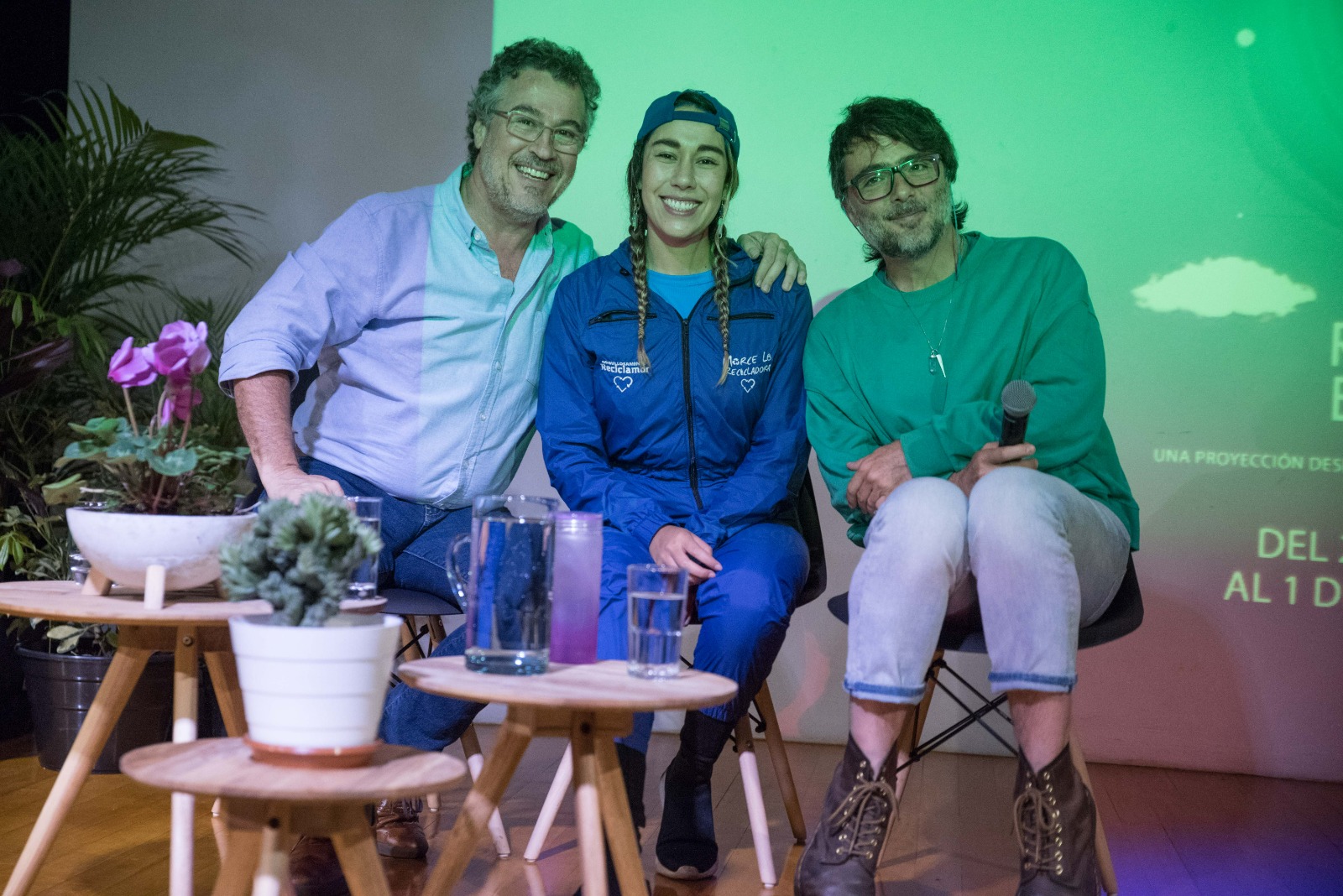
AM: To conclude, could you tell us about the ?Breathe Art Forum?? I consider it an extremely relevant forum, especially given the current conditions of the planet and the need to promote sustainability. What would be the strategy to invite other countries to join this initiative? I was impressed by the calculator they developed to measure the carbon footprint of artistic events. How could we encourage more countries to join and commit to reducing pollution in the artistic field?
MG: Yes, well, the forum is basically one of the strategies that we have within the entire program that we have called "Breathe Art." It has three main lines of action; One axis has to do with energy efficiency. Energy efficiency basically implies carrying out all the necessary actions to improve the infrastructures we have and be more efficient in the energy materials we have there. We have made improvements in the theaters, changed lighting, going from halogen technologies to LED technologies, changed planetarium projectors, and also improved efficiency with respect to energy use at festivals, reducing assembly and rehearsal times. We have also improved the infrastructure of the theaters, changing structured cabling to also be much more efficient and updating technology. So, one point has to do with energy efficiency.
The other point, the other axis, has to do with the economics of what we have called "conscious economies." Basically, it is being able to tell the entire art value chain that, even if it is little, we contribute to the generation of carbon footprint and other greenhouse gases just by doing what we do. So, being able to tell the entire arts value chain that no matter where you are or what type of artistic experience or practice you foster, you must be aware of this footprint you generate and take actions to mitigate it. For this, we have carried out various actions.
The institute, as part of our actions, registered in the green purchasing guide of the Colombian State. In addition, we have begun to raise awareness in our sustainability line so that entrepreneurs and new companies associated with art begin to incorporate these types of good practices. We have created a guide for sustainable theaters and festivals and another guide for green filming and audiovisual projects that contribute to reducing the carbon footprint.
Indeed, we have developed a carbon footprint calculator that allows you to measure how much your carbon footprint is with a public performance and, based on that, make decisions to mitigate, reduce and, ultimately, offset that carbon footprint.
What we seek is to reduce energy use and mitigate waste generation as much as possible, such as reducing testing times associated with single-use plastics and opting for organic and locally produced catering. We prevent artists from using private jets. We repeat it constantly to prevent them from falling into that temptation.
In the event that compensation is necessary, we implement compensation models. At this point, we connect with the third strategy, to which the forum refers. We call this strategy ?citizen involvement? and basically involves workshops, experiences and campaigns that allow all people who have contact with the institute to learn, even a little, about the strategy and the actions they can take. In this context, we have the forum that has had four versions and that has allowed us to understand various models, forms and alternatives, as well as learn about international or national experiences of people who work towards these objectives.
But we also have strategies like ?more art, more music, less plastic? for festivals. In the park, we always insist to our attendees and festival organizers that they take into account the use of plastic bottles, and, if they use them, that they deposit them in the designated places. In addition, we work with professional recyclers who are constantly collecting waste, ensuring that the parks are as clean or cleaner than what we find and taking much more usable waste.
That is, we seek to ensure that they do not become garbage and that they do not go to places designated for final garbage disposal. Instead, we want professional recyclers to be able to collect them and turn them into usable material.
In this way, we managed to increase the amount of waste used by almost 30% compared to other festivals in previous years. Compared to other events, in tons of plastic, there are approximately ten tons more plastic recovered at the festivals in the park. It is a much more solid strategy.
In addition, we have a page, ?Breathe Art? SEO point by point, where you can see everything we have done on the topic, download the guides and learn a little more about the forums we have been holding. We want them to be interested and for all those who are going to carry out any artistic practice to take this into account.
There are tremendously simple actions that even a starting artist can carry out. For example, when you request catering or refreshments from the theater that invites you, ask that it be local and bring your own small bottle, whether aluminum or plastic, that you bought and that has many uses. Instead of asking for bottled water, these small actions significantly help return the planet better than we found it, and it's our responsibility.
You may be interested in: Exploring the paths of consciousness: Exclusive interview with Simón Mejía, producer of Bomba Estéreo


